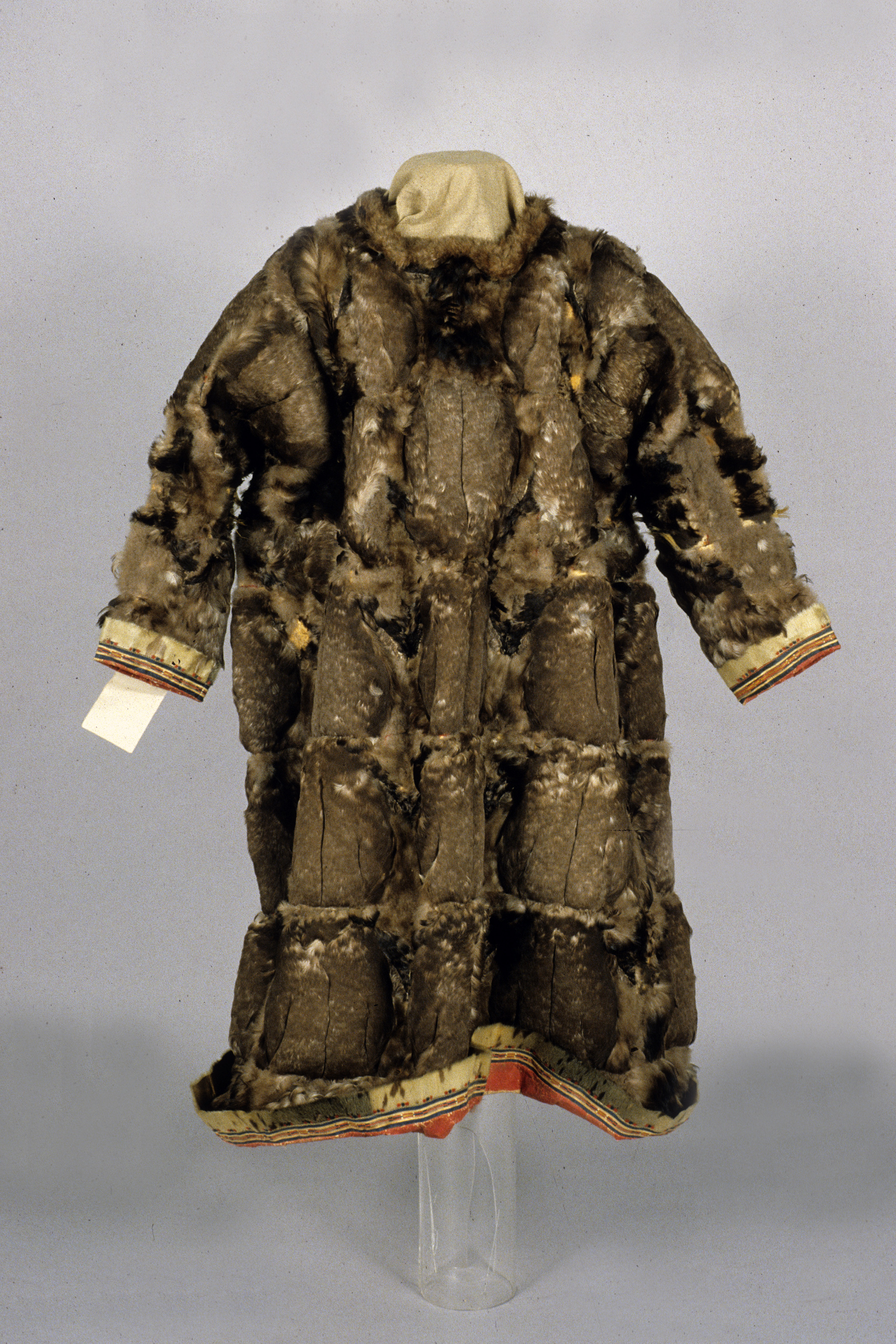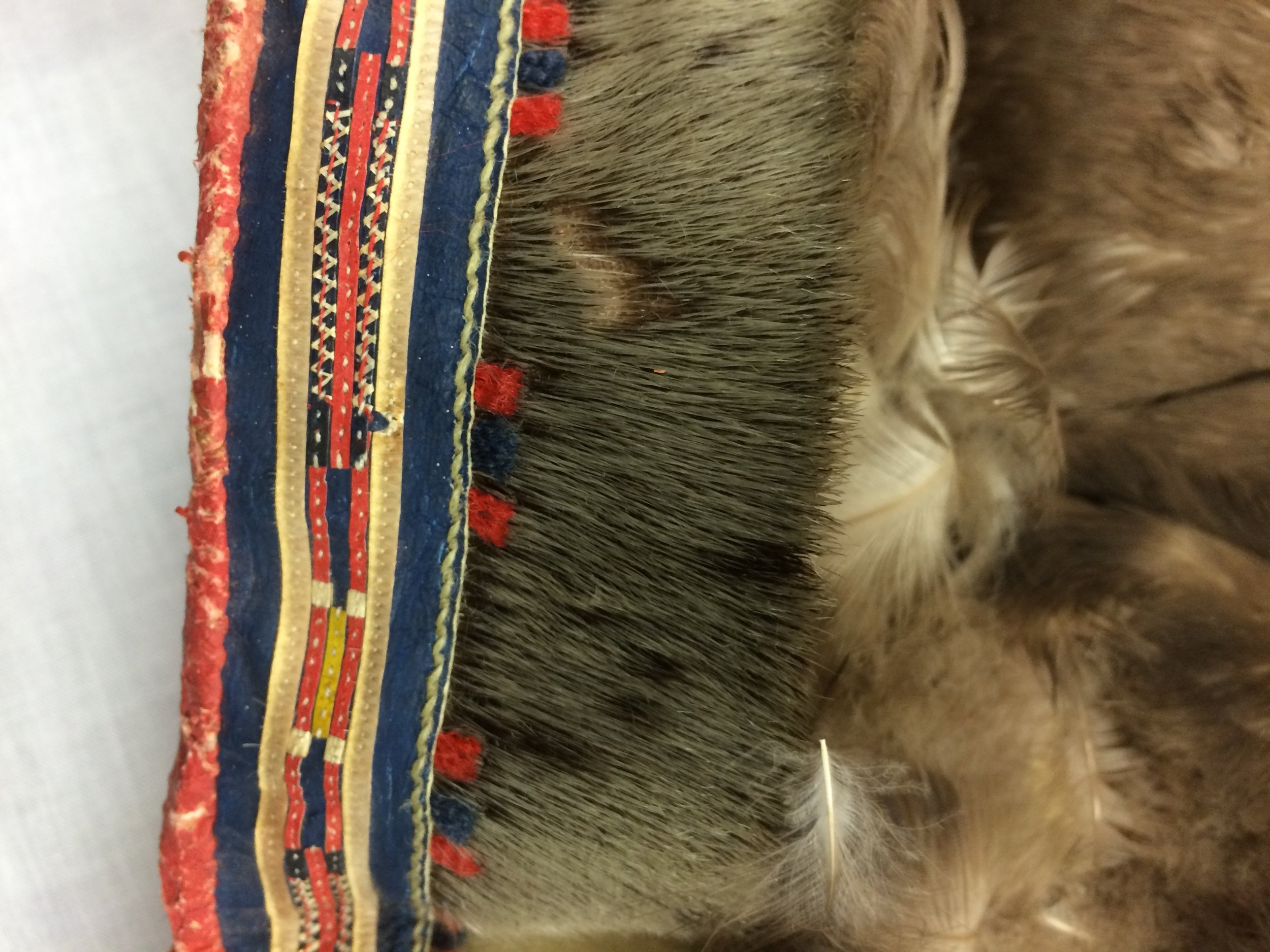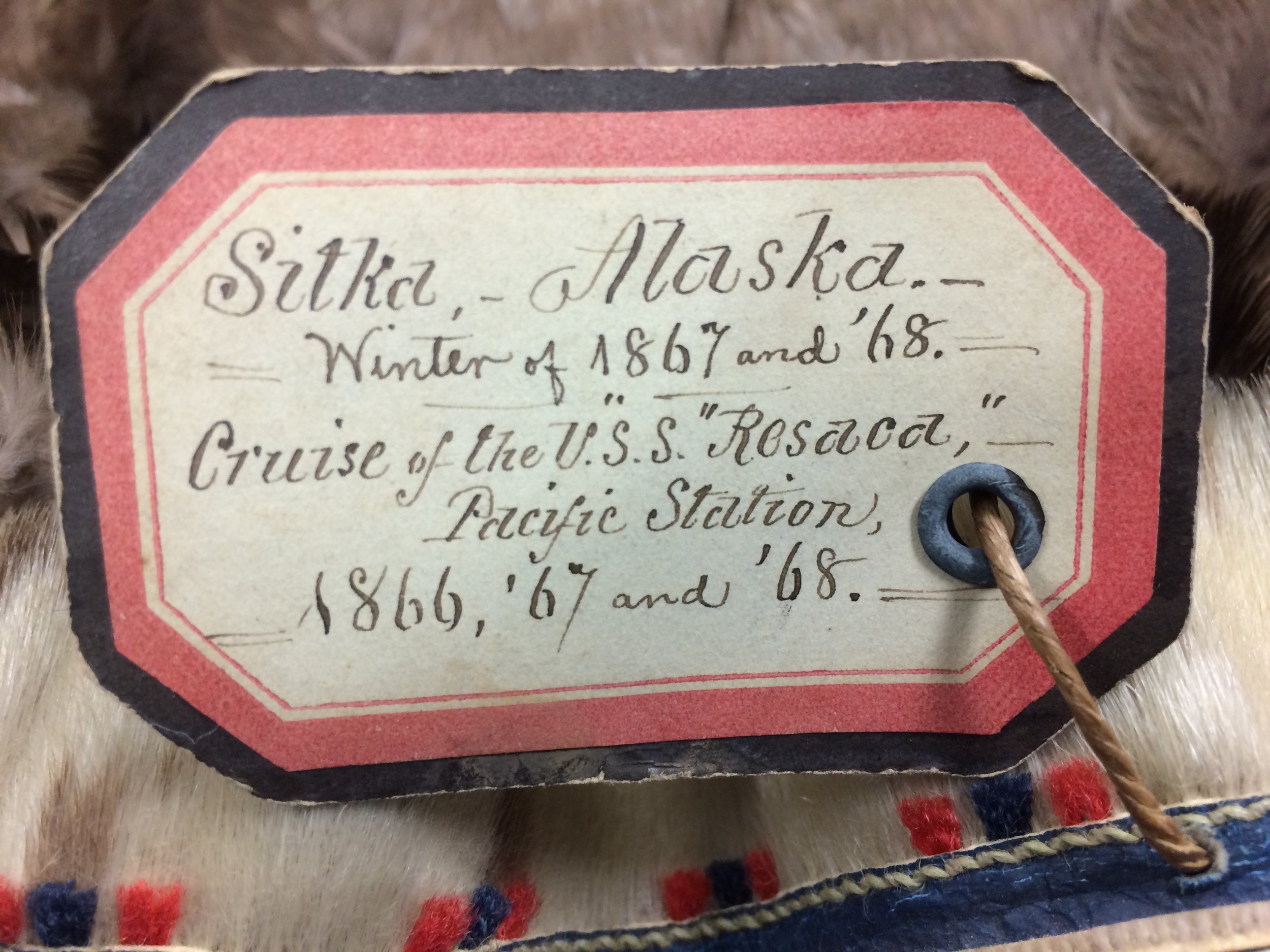When the USS Resaca left Sitka in January of 1868, the Navy vessel carried on board Princess Maria Maksutoff, the wife of the last governor of Russian America, and a puffin skin parka. The Resaca had been sent to Alaska's waters due to an outbreak of yellow fever, and by happenstance arrived in Sitka in time to observe the official transfer ceremony, wherein Alaska became American.
George Cooke was the surgeon on board the Resaca, and while in Sitka he acquired a puffin skin parka either made by Unangan or Alutiiq women. This parka is now in the collection of the Alaska State Museum. Alutiiq and Unangan women had to sew puffin skin parkas for the Russian-American Company in the first decades of the 19th century. The company dispatched all able bodied men to hunt sea otters, while elders and young men were sent to puffin rookeries to snare birds. These birds were given to the Russian-American Company (RAC), who then distributed the birds to Alutiiq and Unangan women, who were tasked with turning the pelts into parkas. The parkas were then used as a form of payment in exchange for sea otter pelts, puffin skins, and the other Native foods and goods that Russian colonies and outposts depended on for survival. The work of Alutiiq and Unangan women, then, was central to the RAC's internal economy.
Images courtesy Alaska State Museum.
In this episode, I discuss the internal economy of Russian America with Russian American historian Katherine Arndt, learn about the art of Alutiiq skin sewing from Alutiiq artist Susie Malutin, discuss possible scenarios that resulted in an Alutiiq or Unangan parka ending up on a quarantined Navy ship, and consider the moment during which the Russian flag came down and the Stars and Stripes flew over Alaska.
This episode was produced thanks to the assistance of the Alaska Historical Commission, Alaska State Museum, Alaska Office of History and Archaeology, Susie Malutin, Patrick Saltonstall, Katherine Arndt, Ellen Carrlee, Steve Henrickson, Andrew Washburn, Alaska Historical Collections and Alaska State Archives.


